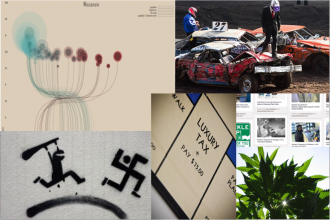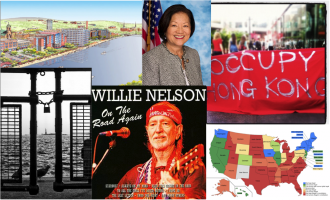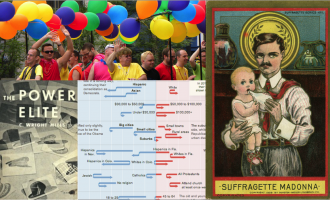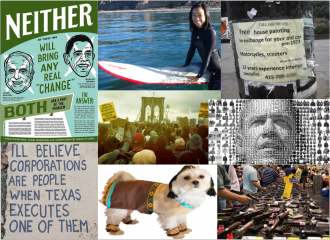 It’s the Fi-nal Roundup! Of the year…
It’s the Fi-nal Roundup! Of the year…
And it’s going to be a short one, given travel and a luckily contained but still exciting house fire early this morning. All’s well, but such things do tend to cut into the time available for waxing poetic (or waxing anything, for that matter). A programming note: on January 1st, we will share our most-trafficked post from each section of the site as its own sort of Annual Roundup. Stay tuned!
In the meantime, here’s what was going on in The Society Pages this week.
Office Hours:
“Shadd Maruna and Fergus McNeill on The Road from Crime,” by Sarah Lageson. In which two criminologists become documentarians, learning about intention, method, and medium along The Road from Crime.
Editors’ Desk:
“Whither Whiteness?” by Doug Hartmann. In which our editor considers the coming shift to an American minority-majority and wonders if it’ll change white privilege.
Reading List:
“What Stringer Bell Can Teach Us about Gangs,” by Erin Hoekstra. In which James Densley finds gangs don’t want a loose cannon—a reputation for measured violence is much more valuable.
Teaching TSP:
“Teaching with Toys,” by Hollie Nyselth Brehm. In which the author shares an assignment to help students sniff out class, gender, and other dimensions of play on a field trip to the toy store.
Citings & Sightings:
“Bystander Journalism?” by Erin Hoekstra. In which the bystander effect goes high tech.
“November Media Award for Measured Social Science,” by Hollie Nyseth Brehm. In which NPR takes top honors for a story on a decades-old sociological experiment… and why we cramp up our hands writing holiday cards.
A Few from the Community Pages:
This week, I’m only including those posts that dealt with issues brought up in the wake of the tragic killings in Newtown, CT on December 14. This is important, thoughtful content, presented without my own commentary (beyond the “important, thoughtful” bit, naturally).
- Public Criminology. “A Broader-Based Response to Shootings,” by Chris Uggen. “A Father’s Grief and Grace in Newtown,” by Michelle Inderbitzen. (Previously: “Okay, Violence Is Down, But Have Mass Shootings Increased?” by Chris Uggen).
- Sociological Images. “The Transformative Potential of Technology,” by Lisa Wade and Gwen Sharp. “Masculinity, Mental Illness, and Guns: A Lethal Equation?” by Michael Kimmel. “Guns for Christmas,” by Lisa Wade. “Gun Ownership and Political Affiliation,” by Gwen Sharp. “Whose Lives End by Gun?” by Lisa Wade. “Assault Deaths in the U.S.,” by Kieran Healy. “Public Opinion on Gun Control,” by Lisa Wade. “The Existential Fallout After Newtown,” by Jooyoung Lee.
- Sociology Lens. “Addressing Issues of Masculinity in the Wake of the Newtown Tragedy,” by Cheryl Llewellyn.
- Cyborgology. “Tech Isn’t Neutral, And Guns Cause Tragedies,” by PJ Rey.









